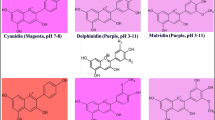Summary.
The essential amino acid lysine is synthesised in higher plants via a pathway starting with aspartate, that also leads to the formation of threonine, methionine and isoleucine. Enzyme kinetic studies and the analysis of mutants and transgenic plants that overaccumulate lysine, have indicated that the major site of the regulation of lysine synthesis is at the enzyme dihydrodipicolinate synthase. Despite this tight regulation, there is strong evidence that lysine is also subject to catabolism in plants, specifically in the seed. The two enzymes involved in lysine breakdown, lysine 2-oxoglutarate reductase (also known as lysine α-ketoglutarate reductase) and saccharopine dehydrogenase exist as a single bifunctional protein, with the former activity being regulated by lysine availability, calcium and phosphorylation/dephosphorylation.
Similar content being viewed by others
Author information
Authors and Affiliations
Additional information
Received December 21, 1999 Accepted February 7, 2000
Rights and permissions
About this article
Cite this article
Azevedo, R., Lea, P. Lysine metabolism in higher plants. Amino Acids 20, 261–279 (2001). https://doi.org/10.1007/s007260170043
Issue Date:
DOI: https://doi.org/10.1007/s007260170043




